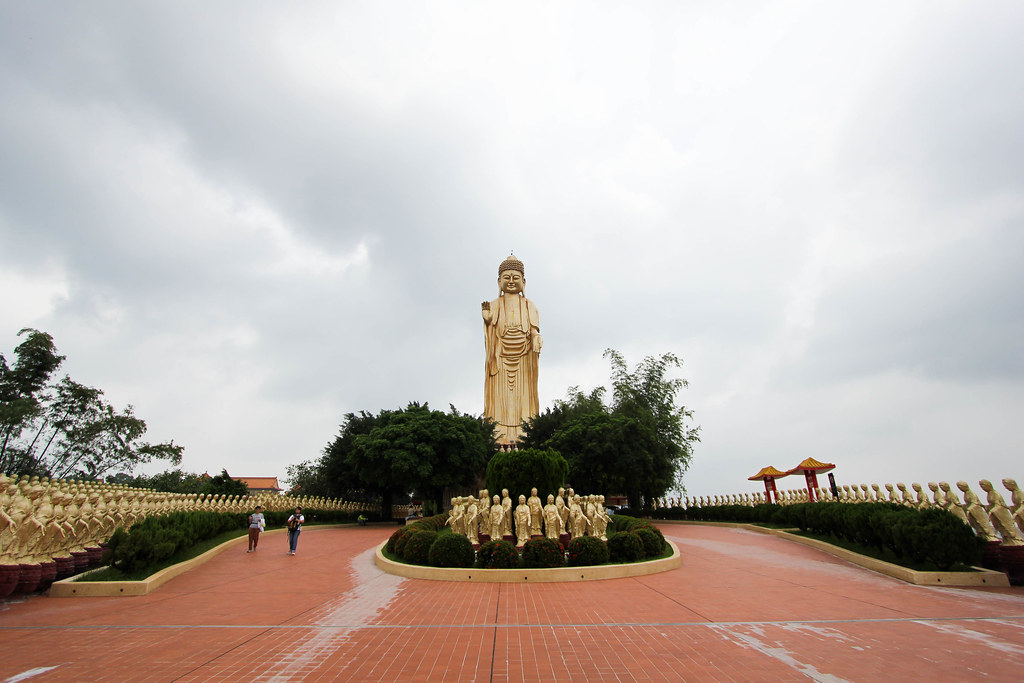
Kaohsiung, Taiwan (dpa) – Extravagant usually is not an adjective used to describe Buddhist monks who have given up their worldly possessions for a life of piety. But a Buddhist monastery in southern Taiwan has spent billions of Taiwan dollars on building an extravagant memorial complex to house its prized relic – a supposed tooth from Lord Buddha. The temple received the Buddha’s tooth relic in 1998 from a monk who smuggled it out of Tibet during China’s Cultural Revolution. Dubbed the Buddha Memorial Center, the site is being developed by Fo Guang Shan, one of the largest Buddhist monasteries in Taiwan. It took five years to build and has just officially opened. Rising above the surrounding rural landscape 25 kilometers north-east of Kaohsiung, the complex covers about 35 hectares of land. The layout resembles a Chinese imperial palace, with several layers of stately edifices stretching a kilometer into a narrow valley. It starts with a large welcome hall, followed by a grassy area bordered by eight pagodas, a bell tower and drum tower. The trees planted on the grass were imported from India. Towards the rear is an exhibition center that resembles a Mayan pyramid with four stupas on the corners. The monastery plans to place the tooth at the top of the pyramid, while a museum and international conference center will be housed inside the structure. An 108-metre-tall Buddha, said to be the world’s tallest sitting Buddha, anchors the end of the complex. Although refusing to disclose how much money was spent, the administrator of the monastery, a monk named Hui Chuan, would only say it cost several billion dollars. A tour guide said independent analysts have pegged the expenditure at 10 billion Taiwan dollars (330 million US dollars) based on the man-hours and materials they have seen going into the site. Miao Tan, a nun who lives at the monastery, explained that the monastery’s founder, 85-year-old Venerable Master Hsing Yun, wanted to leave a lasting mark for Buddhism during his lifetime. “Some people have said that the money could have been used to help the sick or to promote charity, but those things are only temporary,” she said. “Venerable master said he wanted to build something for the world that can last 1,000 years.” No doubt, tourism will be a primary draw to help the monastery recover some of the cost. The monastery is building private “meditation caves” on the hillside overlooking the complex that people can reserve for a donation. In addition, to provide a periodic attention boost, Hsing Yun had the builders create 48 hidden rooms under the complex, where artifacts from today’s world will be sealed inside, with a scheduled opening of one room every century. A countdown clock will display how much time remains until the next opening in approximately 97 years. Founded in 1967, Fo Guang Shan has grown into a multimillion-dollar operation that runs a Buddhist college, temples across the island, and a cable television station, making Hsing Yun one of the most influential religious leaders in Taiwan. Source: Bikya Masr, Image: flickr.com




